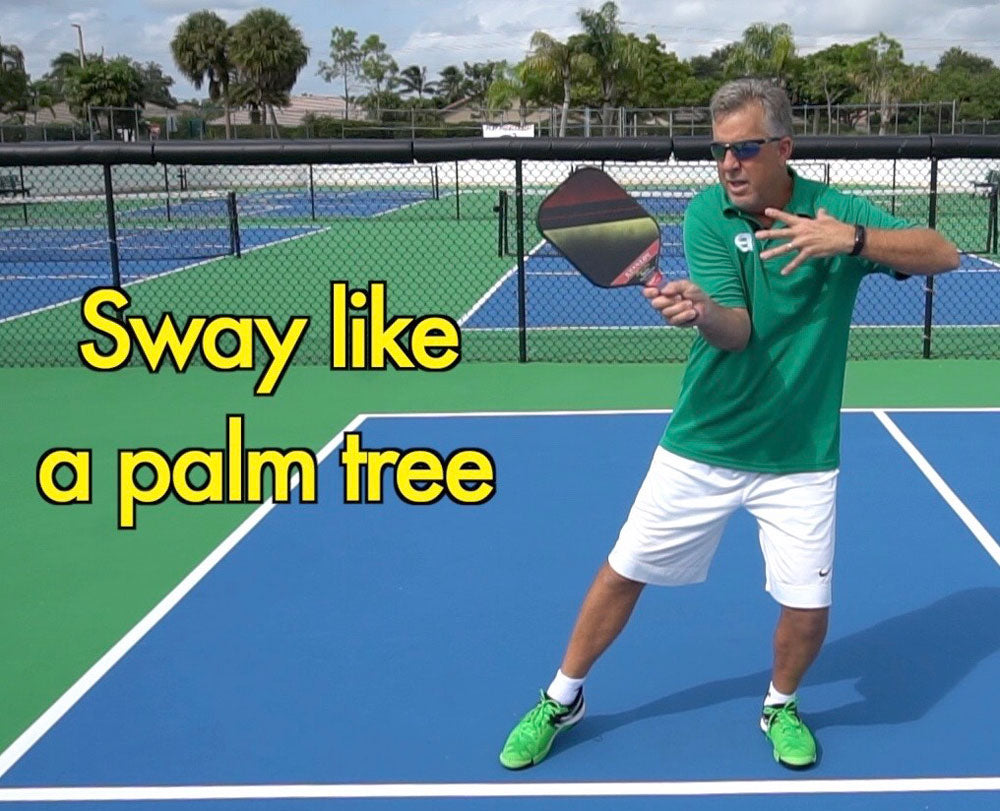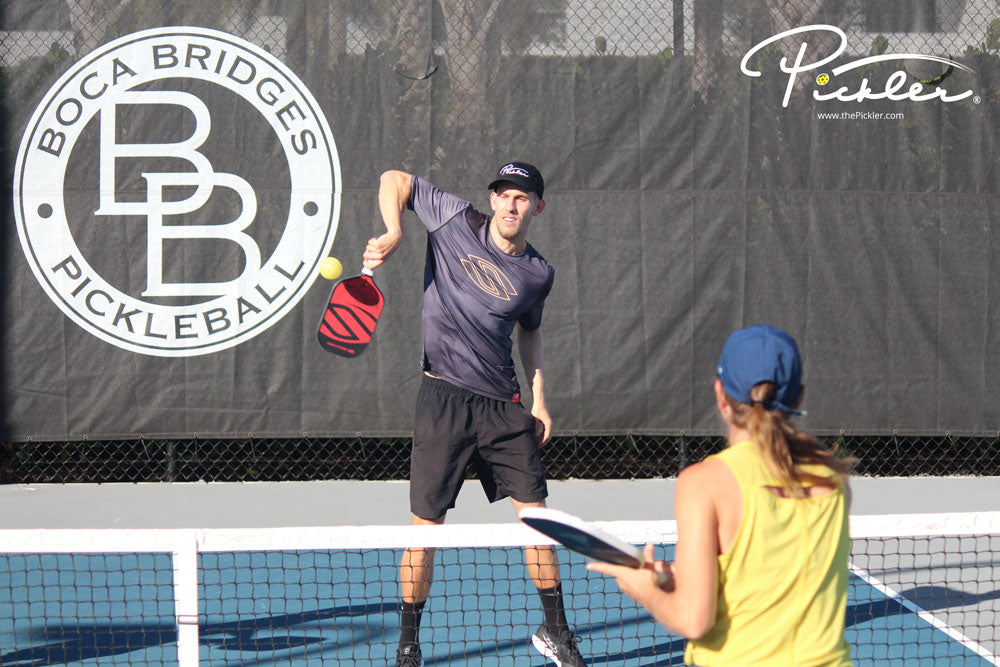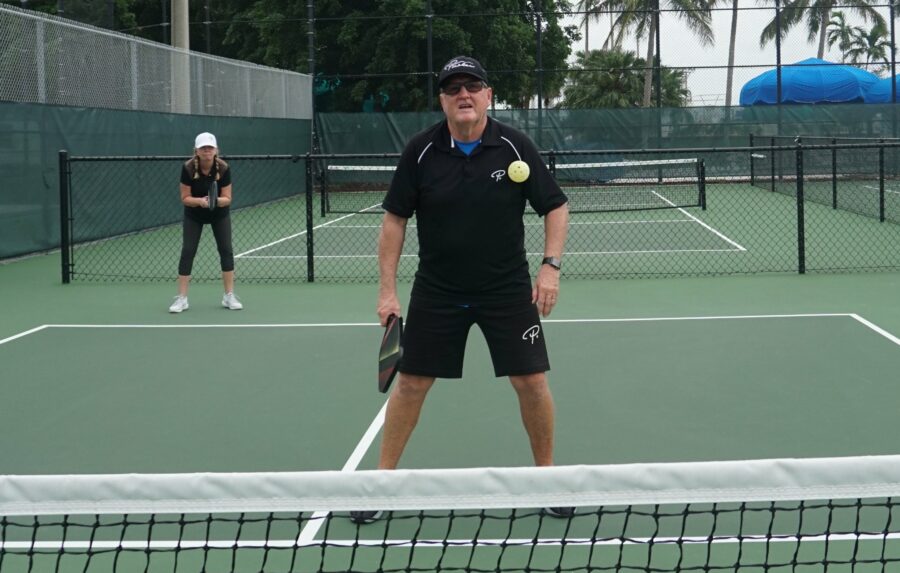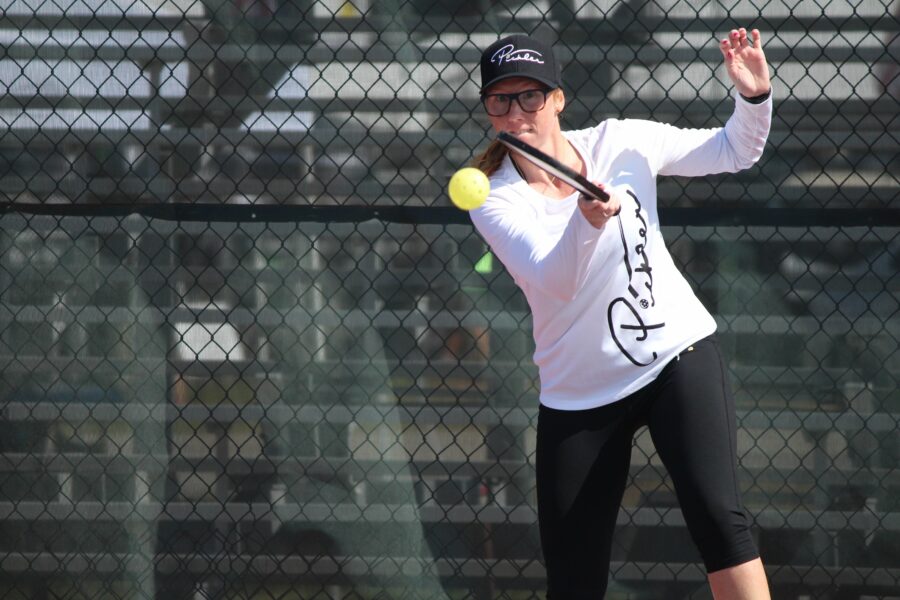A common pattern on the pickleball court is to find your opponents’ paddle-side shoulder and speed up the pickleball toward that spot. This will have the effect of causing your opponent to “chicken wing” in order to return the pickleball. The paddle-side shoulder is a difficult spot to defend as it is the transition point between a backhand shot and a forehand shot. In other words, your opponents will have trouble determining whether to hit a backhand or a forehand, causing confusion and errors.
However, what if this pattern is used against you? How do you defend against the chicken wing attack on the pickleball court?
To defend against the chicken wing attack, try the following:
-
Anticipate and Find Your Forehand – The best way to defend against the chicken wing attack is to go on the offense, if possible, and punish the pickleball (so your opponents will be discouraged from trying it again). To do this, it is imperative to be able to flip your paddle to a forehand position and hit the pickleball using your forehand. As noted above, this can be difficult, as you will have just a short amount of reaction time in order to flip from your ready position (which, for most pickleball players, is somewhat favored to the backhand side) to your forehand position. To help you do this, it is important to:
- Anticipate your opponents’ attack by looking for cues and mentally preparing for the speed up.
- Giving yourself space to find your forehand, which you can do by either:
- Moving your feet. The most efficient way to move your feet to open up your forehand is to slide your paddle-side foot back at a 45-degree angle. This rotation will give you more room to find your forehand side.
- However, oftentimes, it is difficult to find the time to react using your feet. So, another way to give yourself space is to move your top half (which may take a little less time). Think of yourself like a palm tree. A palm tree has a strong, firm base, but the fronds at the top of the palm tree sway in the wind. For instance, if you are a right-handed player about to hit a forehand volley, be like a palm tree and sway and move the top half of your body to the left in connection with striking the pickleball. This will give you room to make a better, more offensive volley.
- Avoid taking a big backswing. Use a short, compact forehand punch.

- Avoid Permitting Your Opponents to Attack – Many pickleball players will only attack on certain balls—for instance, a pickleball that sits above the net or takes a high bounce, or maybe only a pickleball that is on their forehand side. Look for tendencies in your opponents that like to hit the chicken wing attack and avoid those circumstances.
- Be Ready for the Defensive – If you find yourself getting attacked in the chicken wing area, and are unable to attack using your forehand, be ready to go on the defensive. Try to, at a minimum, reset the pickleball into your opponents’ side of the Kitchen and get your shot to bounce. The key is to hit the pickleball down toward your opponents’ feet in order to reset the point and avoid another chicken wing attack. If you are unable to get the pickleball to bounce—which may be unavoidable, as the chicken wing is designed to induce you to pop up the pickleball—then be ready to go on the defensive. Do your best to get low, get your paddle out in front, and reset the point (which is easier said than done).




